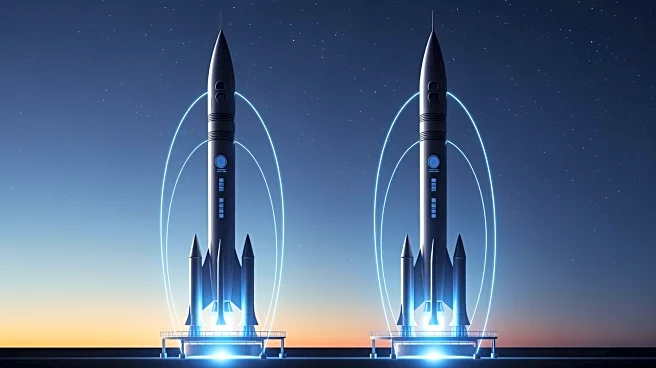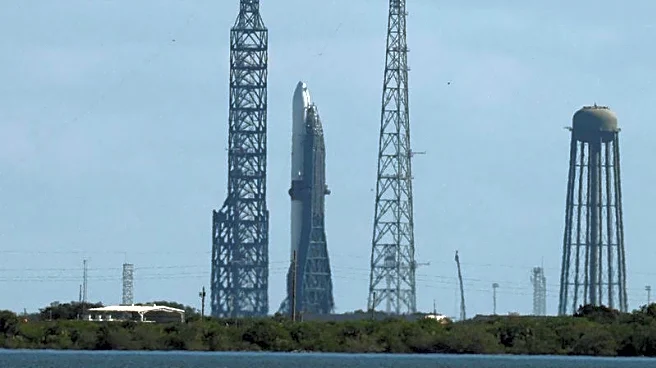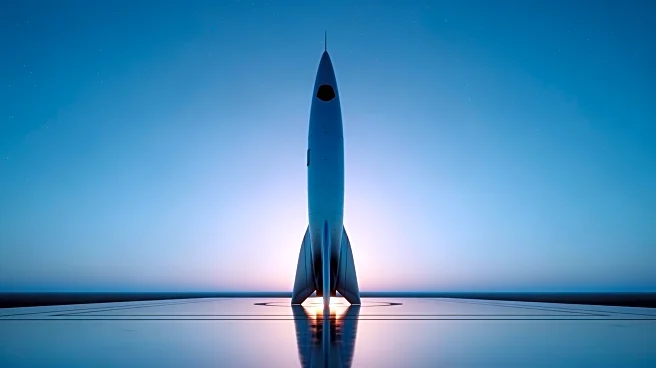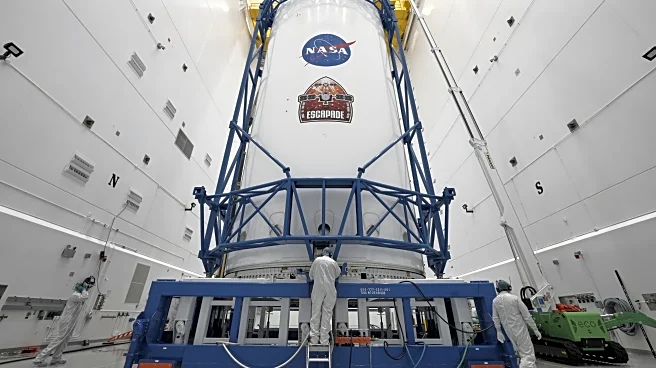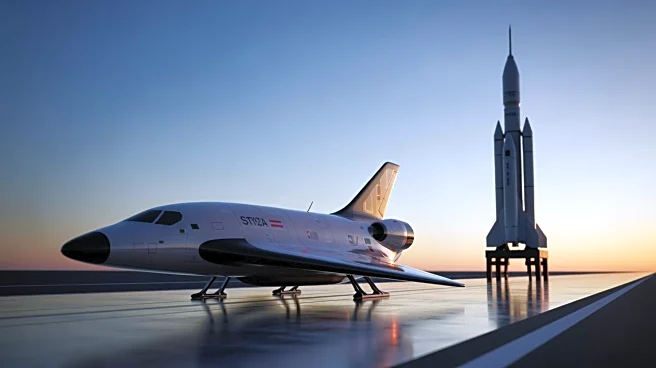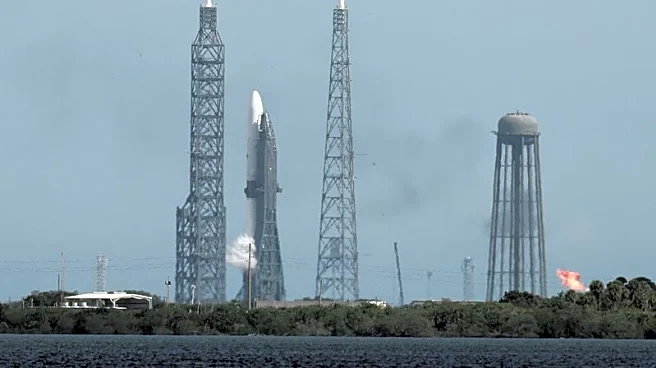What's Happening?
SpaceX achieved a remarkable feat by launching two Falcon 9 rockets within a span of less than four hours from Florida's Space Coast. The first launch occurred at 10:08 p.m. EST from NASA's Kennedy Space Center,
deploying 29 Starlink satellites into low Earth orbit. The rocket's first stage successfully landed on the drone ship 'A Shortfall of Gravitas' in the Atlantic Ocean. Shortly after, at 1:44 a.m. EST, another Falcon 9 rocket launched 29 Starlink satellites from Cape Canaveral Space Force Station, with its first stage landing on the drone ship 'Just Read the Instructions.' These launches mark the 145th and 146th Falcon 9 missions of the year, contributing to the expansion of the Starlink megaconstellation, which now boasts over 8,900 operational satellites.
Why It's Important?
The rapid succession of these launches underscores SpaceX's capability to efficiently deploy satellites, enhancing global internet connectivity through its Starlink network. This expansion is significant for remote and underserved areas, providing them with access to high-speed internet. The growing number of satellites also strengthens SpaceX's position in the commercial space industry, potentially influencing market dynamics and competition. Furthermore, the successful landings of the rocket stages highlight advancements in reusable rocket technology, which could lead to reduced costs and increased frequency of space missions.
What's Next?
SpaceX is likely to continue its aggressive launch schedule to further expand the Starlink constellation, aiming to provide comprehensive global coverage. This could lead to increased partnerships with governments and businesses seeking reliable internet solutions. Additionally, the success of these missions may encourage further investment in reusable rocket technology, potentially accelerating advancements in space exploration and satellite deployment. Stakeholders in the telecommunications and aerospace industries will be closely monitoring SpaceX's progress and its impact on global connectivity.
Beyond the Headlines
The expansion of the Starlink network raises questions about space traffic management and the long-term sustainability of satellite constellations. As the number of satellites in orbit increases, concerns about space debris and collision risks may prompt discussions on regulatory measures and international cooperation. Moreover, the widespread availability of internet access through Starlink could have cultural and economic implications, bridging digital divides and fostering global communication.
